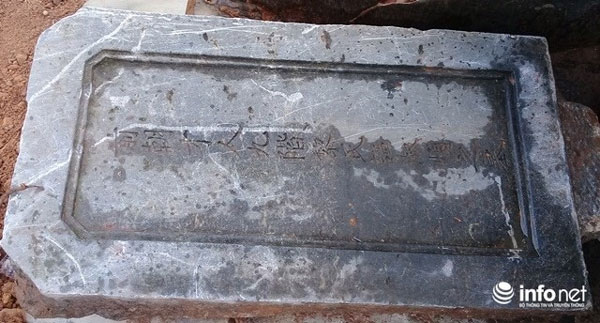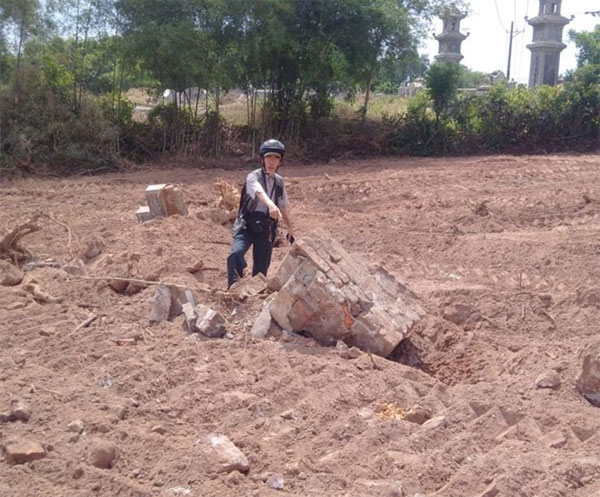VietNamNet Bridge – Hue residents voiced their anger after the tomb of a king’s wife was razed during construction of a parking lot near the mausoleums of emperors Tu Duc and Dong Khanh.

|
|
The stone stele of the bulldozed tomb. Photo infonet.vn |
On Thursday, residents living in Thuy Xuan Commune in central Thua Thien- Hue Province and near the mausoleums attempted to stop a bulldozer that was tearing down a royal tomb, but the driver ignored the villagers and razed the tomb.
Tran Duy Quy, a local resident who attempted to stop the destruction of the 50sq.m tomb, believed it was a royal tomb because of its size, structure and its domed gate. Other residents said the tomb was ancient and located amidst tombs of other wives from the Nguyen Dynasty (1802-1945)’s fourth king – Tu Duc.
According to researchers, among the many wives of a king, only the beloved wives of the king were buried near his resting place.
At that time, people believed the tomb of a king’s wife had been razed. However, Phan Thanh Hai, director of Hue Monuments Conservation Centre, the local government’s body that manages heritage sites related to the Nguyen Dynasty in the former imperial capital city, denied that a tomb had been destroyed.
Hai told Viet Nam News that his staff had conducted “careful research” in 2013, and they noted that there were a tomb designated for Hoc Phi, a wife of King Tu Duc, as well as another common tomb for 15 other wives of the king.
After news of the tomb being destroyed was revealed, the bulldozing was stopped for the day to allow for an investigation by a team that includes members of the Nguyen Family committee, who are descendants of the Nguyen Dynasty, and staff of Chuoi Gia Tri Limited Company, the investor in the parking lot.
They used excavators to help find a tombstone, which includes written information identifying the person buried in the tomb. Two days later, on Saturday, a stele was found and it helped confirm the razed tomb belonged to a king’s wife.
After the discovery of the stele, members of the Nguyen Family committee across the country and abroad were furious and demanded an answer from local culture authorities.
“The tomb is located outside the authorized zone managed by the centre,” said Hai of the conservation centre. He confirmed that responsibility belonged to the local Department of Culture and Sports, but failed to explain the destruction of an ancient building located amidst other royal sites that the centre managed.
The company that performed the bulldozing said the city’s land management bureau had told them the site was ‘clean’. Before that, several tombs containing local people were removed during the clearance of the site.
However local residents questioned why the bulldozer’s operator did not stop when residents asked him to and demanded that a criminal case be opened.
“It is a crime and a violation of Vietnamese ethics codes and laws,” said Ngo Huu Loi, a local resident. Damaging and destroying graves is a violation of Vietnamese laws.
The proposed parking lot is 17,000sq. m wide, with an estimated capacity to hold 100 cars and 120 motorbikes at the same time. The company has razed a hill as part of the construction work.
King Tu Duc had 104 wives. The woman buried in the bulldozed tomb is believed to be among wives of the 9th rank of the emperors.

|
|
A member of the Nguyen Family committee, Vinh Khanh, pointed at part of the wall of the bulldozed tomb. Photo: Dien Quang/VNS |
VNS
| related news |